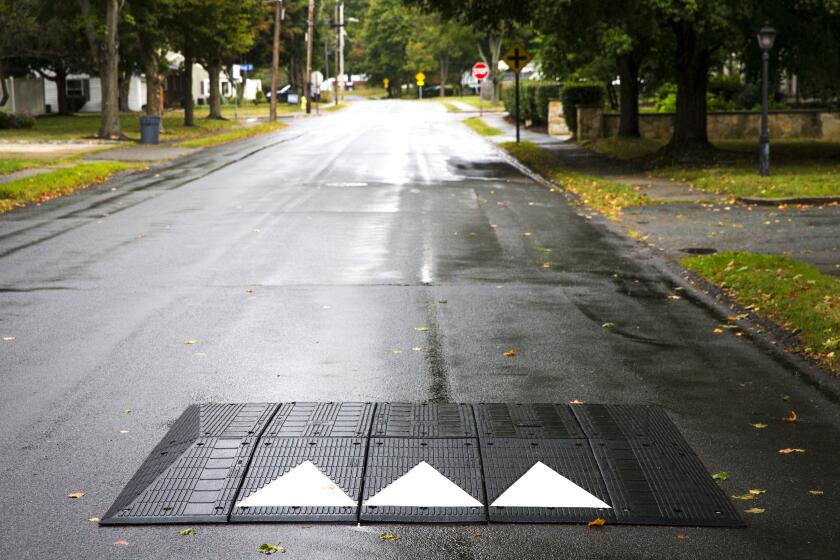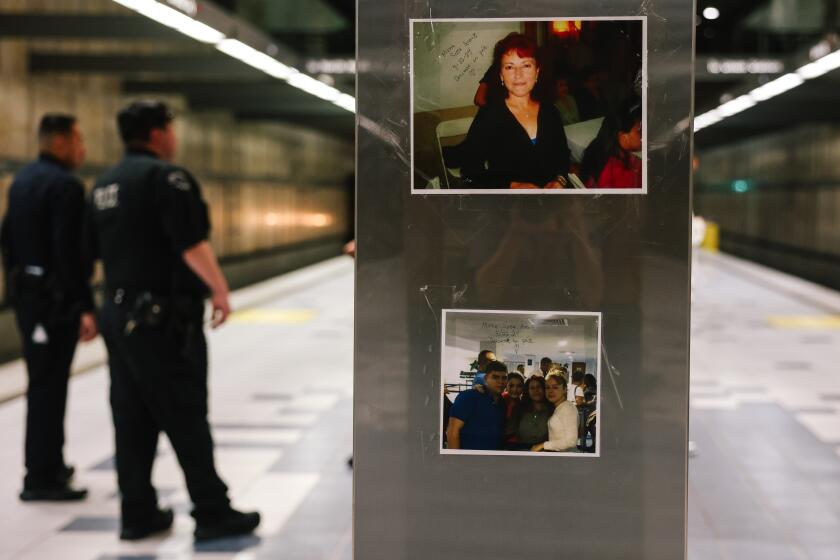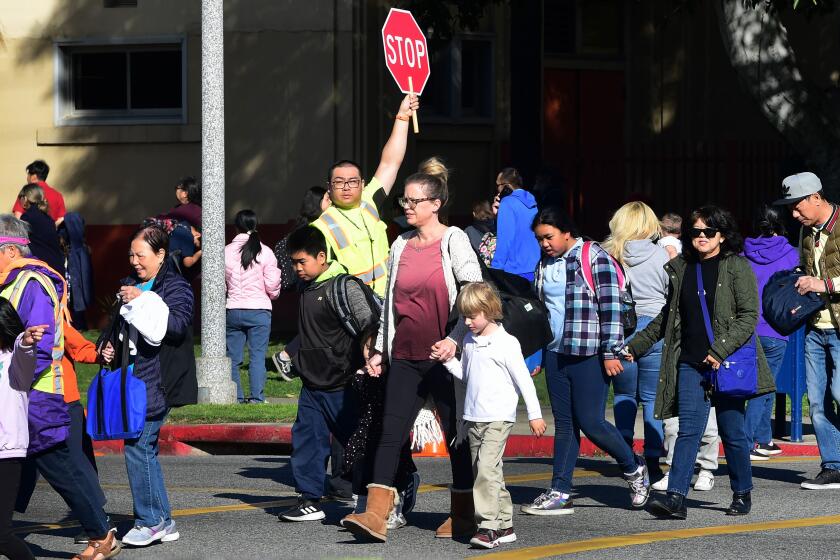Editorial: Reclaim MacArthur Park for people, not cars
Of all the places in Los Angeles where it makes sense to close a street to cars, the half-mile stretch of Wilshire Boulevard through MacArthur Park tops the list.
Where else could L.A. instantly add more than two acres of public open space in a park-poor neighborhood that is also one of the most densely populated communities in the country? By simply rerouting vehicles around the park and reclaiming the road for pedestrians and bicyclists.
Residents shouldn’t have to queue up once a year for the speed hump lottery just to make their neighborhoods safer for people to walk, bike and drive.
Los Angeles may be catching up to other major cities, such as New York and San Francisco, that have closed major roads through public parks to give people more space to recreate safely. The city closed a portion of the road through Griffith Park Drive to much success in 2022.
Now Councilmember Eunisses Hernandez has launched Reconnecting MacArthur Park, the city’s most ambitious effort yet to permanently pedestrianize a major street. Along with Mayor Karen Bass and several city department heads, Hernandez announced this week the first phase of the project, which will include community input, draft environmental documents and test closures. Don’t expect the road to close permanently any time soon. Hernandez’s office said the project is a work in progress and will take years to develop.
Violent attacks on the Metro system have scared riders and present an existential threat to public transit in Los Angeles. Leaders have to make major changes to keep the system viable.
The project is being funded in part by a $2-million grant from the U.S. Department of Transportation’s Reconnecting Communities Pilot Program, which is aimed at undoing or repairing the harm caused by transportation construction decisions of the past.
More than a century ago, MacArthur Park was a serene paradise with a sprawling lake in a rapidly urbanizing city. But civic boosters wanted Wilshire Boulevard to continue, uninterrupted from the ocean to downtown. So the city built the road through the middle of the park turning the space into more of a “drive-through” rather than a “destination park,” Jose A. Gardea wrote in his history of MacArthur Park.
Blocking off streets near schools is simply necessary. The inconveniences pale compared with the value of students’ lives.
Today Wilshire Boulevard is one of the city’s main arterials serving motorists and transit riders. To be sure, closing the road and diverting vehicles around the park would be inconvenient. But Los Angeles is a built-out city and leaders need to make tough choices about how to divvy up space. In this neighborhood, open space is desperately needed, and if there is community support, the higher priority should be restoring the park rather than the convenience of cars.
Some nearby residents and business owners question why the city is spending time and money studying the road closure when there are more immediate problems that need to be addressed — namely open drug use and homeless encampments that make people feel unsafe using sections of the park. Their complaints are valid. But residents shouldn’t have to choose between more park space and safe park space. The city has an obligation to do both.
Park space is too precious to cede to motorists. Where possible, Los Angeles should reclaim more roads for the purposes of recreation, health and pleasure. MacArthur Park is a great place to start.
More to Read
A cure for the common opinion
Get thought-provoking perspectives with our weekly newsletter.
You may occasionally receive promotional content from the Los Angeles Times.














